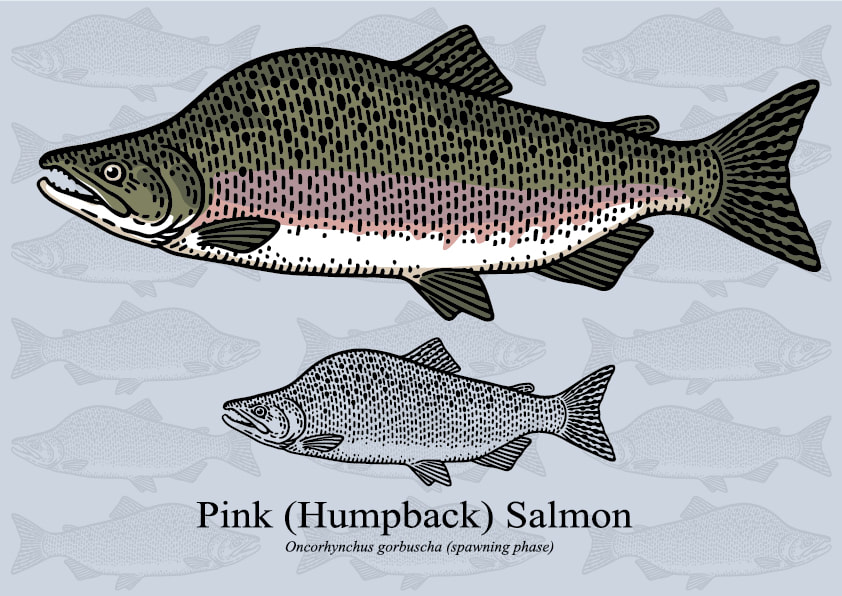|
Pacific salmon are incredibly valued in society. They are the primary food source of many marine animals, a desired seafood that boosts economies, and they play an integral part in Native American culture. They require a wide array of structural, physiological, and behavioral adaptations throughout their lifespans as they travel from freshwater to seawater, and then back to freshwater to spawn. These changing environments lead to challenges salmon must cope with to survive. They respond by altering the timing at which the critical events in their lives occur, otherwise known as phenology. A very pressing question is how the salmon can adapt to the unpredictability of climate change, and how these adaptations may occur. A recently published study, “Evolution of phenology in a salmonid population: a potential adaptive response to climate change,” examined the genetic mechanisms in which these responses to environmental change originated in a population of pink salmon in Auke Creek, Alaska. The researchers, Manhard, Joyce, and Gharret, also sought to determine whether the traits expressed were a response to climate change. To answer these questions, they utilized a technique called genetic monitoring, in which a genetic marker associated with an observable trait is studied through a certain timeframe to identify adaptive changes of interest. In this study, the marker used was the late-migrating marker locus (LMML) which correlated closely to – however did not alter - the genes responsible for a trait in the salmon that resulted in later migration times when expressed. Migration time was selected opposed to other traits because of its high heritability and responsiveness to environmental change.
Manhard, Joyce, and Gharret found that the presence of LMMA (the allele for the late-migrating marker) increased in the population between the years 1984-1990, but fell significantly in adult salmon returning to spawning grounds the following year. Similar patterns were seen in younger generations. These patterns suggest that an event caused this decline in LMMA frequency. Furthermore, there was a reduction in the survival rate of late-migrating salmon within freshwater conditions during this time. Possible reasons for this include that later ocean entry time inhibits growth, leading to more predation and less ability to compete for food. There was a significant temperature increase between 1986 and 1990, potentially leading to the rise of early-migrating salmon. These results support the authors’ hypothesis that there is an adaptive response to climate change. What does this mean? The findings contribute a better understanding of the role that temperature plays in these migratory traits as well as the ability of salmon to reproduce. They also suggest that changes in climate significantly impact salmon populations, although genetic variation still enables a level of resilience in fish populations and maintains some reproductive success. Ultimately, the findings in this study demonstrate the importance of sustainable fishing practices that protect genetic variation and the fish populations in the midst of a changing climate. You can read the full study here: www.nrcresearchpress.com/doi/pdf/10.1139/cjfas-2017-0028 Reference: Manhard, C. V., Joyce, J. E., & Gharrett, A. J. (2017). Evolution of phenology in a salmonid population: A potential adaptive response to climate change. Canadian Journal of Fisheries and Aquatic Sciences, 74(10), 1519-1527.
0 Comments
Leave a Reply. |
AUTHORZach Affolter is a passionate aspiring marine biologist and animal/environmental advocate. Categories
All
Archives
July 2023
|

 RSS Feed
RSS Feed